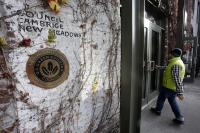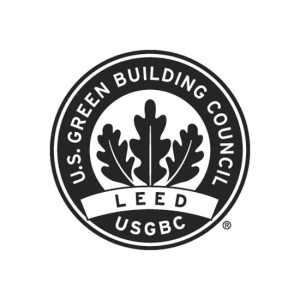PORTLAND, Ore. — An eco-friendly building rating system that has powered a green arms race across the nation now faces a challenge from policymakers and an upstart rival.
LEED, the longstanding king of green construction and renovation projects, has become a de facto brand in cities such as Portland, Ore., where sustainable growth has been the rage for years.
But that could change as legislation and executive orders in several states have all but banned Leadership in Energy & Environmental Design from public contracts, and a new system known as Green Globes has emerged and marketed itself as a simpler, less expensive alternative.
 “LEED is a good process,” said Byron Courts, director of engineering services for Portland’s Melvin Mark Companies. But it represents “a huge bureaucracy that’s extremely complex and costs quite a bit.”
“LEED is a good process,” said Byron Courts, director of engineering services for Portland’s Melvin Mark Companies. But it represents “a huge bureaucracy that’s extremely complex and costs quite a bit.”
Courts has used both LEED and Green Globes, which has issued about 850 building certifications in the past few years and has recently picked up support from the federal government.
LEED supporters say the emerging opposition comes from lobbyists seeking to damage the industry leader and increase the prominence of Portland-based Green Globes.
The timber, plastics and chemical industries support “Green Globes because it does not represent a threat to them, it’s their way of having a green building without having to change their practices,” said Scot Horst, a Green Building Council senior vice president who oversees LEED.
From Seattle to Chicago, LEED has certified thousands of buildings and provided a marketing tool, tax breaks and other incentives to contractors eager to cash in on the sustainability craze.
In Portland, LEED adorns everything from the arena where the NBA’s Trail Blazers play to condos in a trendy warehouse district.
Administered by the U.S. Green Building Council, a nonprofit based in Washington, D.C., LEED aims to reduce the use of energy, water and greenhouse gas emissions in new construction and renovation projects.
Though it’s voluntary and market-based, more than 30 states, multiple cities and the federal government either require LEED construction or incentivize its use in public buildings. LEED has 44,270 U.S. projects, many of which are federal, state and local government buildings.
Critics say it’s a cumbersome monopoly that doesn’t always deliver what it promises. But supporters counter that opponents are pushing the alternative system to redefine the meaning of “green” and skirt LEED’s stringent environmental standards, which were updated last month.
As the debate spreads, lobby groups are asking Congress to ban the use of LEED in federal projects. In several states, including Maine, Georgia, Mississippi and Alabama, LEED standards have essentially been banned in public construction. North Carolina, Florida and, most recently, Ohio also have seen anti-LEED legislation.
Even in eco-friendly Oregon, the governor has ordered officials to examine how green building rating systems benefit the state, though no ban has been put in place.
While most of the orders, amendments and bills don’t mention LEED by name, several ban rating systems that they say discriminate against American wood products.
That’s a direct stab at LEED, which recognizes a single, stringent forest certification system — one that’s opposed by timber industry giants such as Weyerhaeuser, because it does not certify some of U.S. timber. Green Globes accepts less stringent forest certification programs.
Other bans target green building rating systems that don’t use the American National Standards Institute consensus process. Green Globes does, but LEED uses a different process.
Groups such as the American Chemistry Council say LEED lacks true consensus building and its latest requirements discourage “certain products without adequate input from technical experts.” Such statements are a reaction to LEED’s rejection of certain toxic materials.
Some critics are calling Green Globes is an effort at “green-washing,” founded by a former timber executive and overseen by a board of directors that includes the American Chemistry Council, the American Wood Council, DOW Chemical, and the Vinyl Institute.
Its administrator, the Green Building Initiative, says Green Globes should be judged on merit. And though most experts agree the alternative is less strict than LEED, it does offer some advantages.
Just like LEED, Green Globes offers a point-based rating system. But unlike LEED, Green Globes applicants fill out an online questionnaire and get an on-site visit and feedback during the process. The system cuts down on the price of hiring certified consultants who usually complete a LEED application, Courts said.

LEED certification for retrofitting Portland’s Columbia Square building, for example, would have cost about $100,000, Courts said. A Green Globes verification cost only about $20,000. The building was one of nine Green Globes projects completed recently in the Portland area.
That might soon change, however. In late October, the federal government gave Green Globes a stamp of approval.On new construction projects, LEED certification is still a must, Courts said, otherwise “you might have a problem marketing the building.”Though Green Globes is less stringent in some ways, especially when it comes to the types of materials permitted, Courts said, both rating systems use the same yardstick for energy use in existing building renovations.
And for the first time, the U.S. General Services Administration recommended that Green Globes can be used alongside LEED for new construction and renovation projects.
Another great Green article from Green Halo
Track your recycling at www.greenhalosystems.com
Follow Green Halo on Twitter at http://twitter.com/greenhalousa








 “LEED is a good process,” said Byron Courts, director of engineering services for Portland’s Melvin Mark Companies. But it represents “a huge bureaucracy that’s extremely complex and costs quite a bit.”
“LEED is a good process,” said Byron Courts, director of engineering services for Portland’s Melvin Mark Companies. But it represents “a huge bureaucracy that’s extremely complex and costs quite a bit.”


